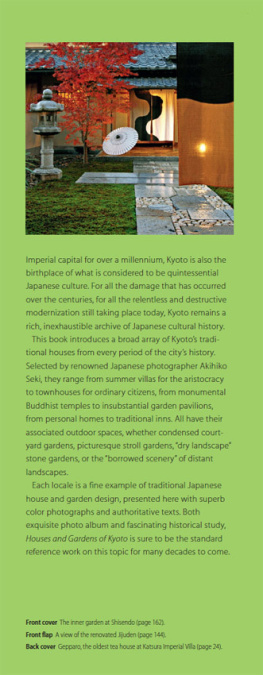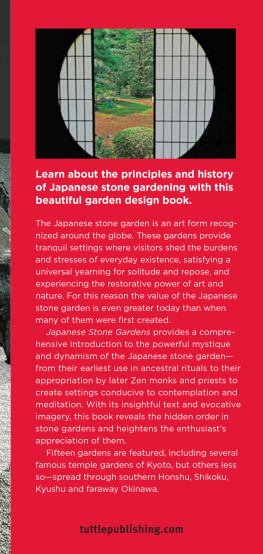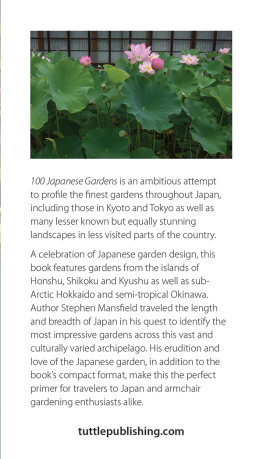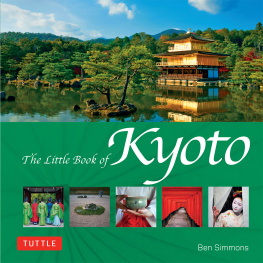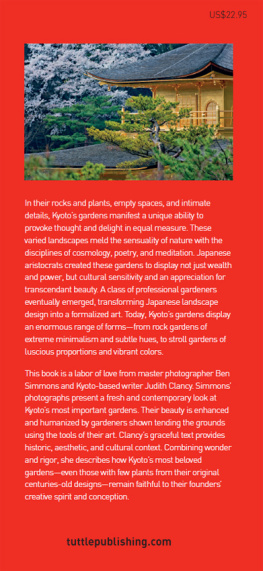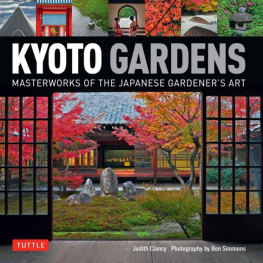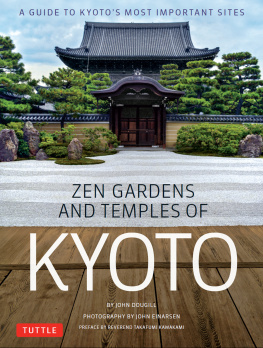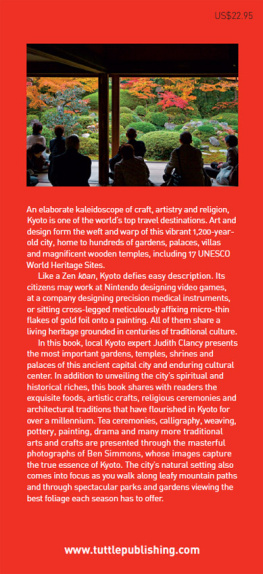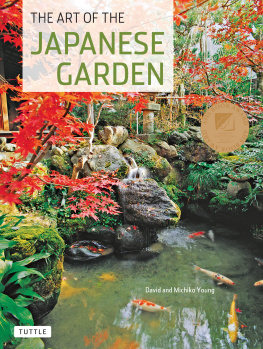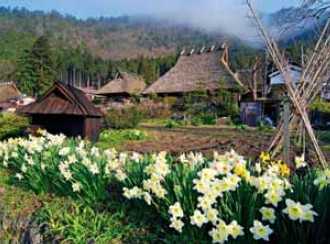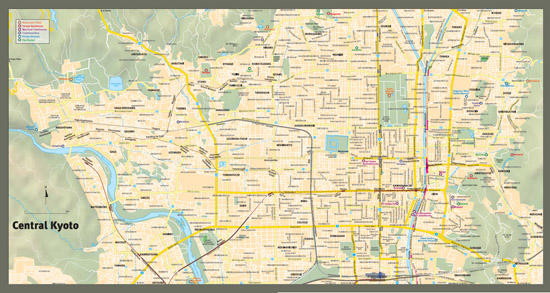I would like to extend my sincere thanks to the owners, managers, and staff of all the ryokan, machiya, country retreats, temples, and historical homes featured in this book. They provided us with great support, and without their assistance and cooperation it would not have been possible to bring this book to fruition.
I also extend heartiest appreciation to my wife Asako, who spent a great deal of time with me during photo shoots, acting as my assistant, coordinator, and sometimes design supervisor.
A special thank you also goes to Thomas Daniell, who wrote the text with the eyes of an architect, as well as to publisher Eric Oey, editorial supervisor June Chong, and designer Chan Sow Yun of Tuttle Publishing, who all put a lot of effort into this publication.
Bibliography

Adolphson, Mikael S. (2000). The Gates of Power: Monks, Courtiers, and Warriors in Premodern Japan . Honolulu: University of Hawaii Press.
Alex, William (1965). Japanese Architecture . London: Prentice-Hall International.
Berque, Augustin (1997). Japan: Nature, Artifice and Japanese Culture . Northhamptonshire: Pilkington Press.
Blaser, Werner (1956). Japanese Temples and Tea-Houses . New York: F. W. Dodge Corporation.
Brown, Kendall H. (1997). The Politics of Reclusion: Painting and Power in Momoyama Japan . Honolulu: University of Hawaii Press.
Clancy, Judith (1997). Exploring Kyoto: On Foot in the Ancient Capital . New York: Weatherhill.
Coaldrake, William H. (1996). Architecture and Authority in Japan . London: Routledge.
Drexler, Arthur (1955). The Architecture of Japan . New York: Museum of Modern Art.
Durston, Diane (1986). Old Kyoto: A Guide to Traditional Shops, Restaurants, and Inns. Tokyo: Kodansha International.
Durston, Diane (1987). Kyoto: Seven Paths to the Heart of the City . Tokyo: Kodansha International.
Enders, Siegfried RCT (1999). Hozon: Architectural and Urban Conservation in Japan . Baden-Wrttemberg: Edition Axel Menges.
Engel, Heino (1985). Measure and Construction of the Japanese House. New York: Tuttle.
Hirai, Kiyosi (1998). The Japanese House Then and Now (Martie Jelinek, Trans.). Tokyo: Ichigaya Publications.
Horiguchi, Sutemi; Kojiro, Yuichiro, and Hamaguchi, Ryuichi (1956). Architectural Beauty in Japan . Tokyo: Kokusai Bunka Shinkokai.
Inoue, Mitsuo (1985). Space in Japanese Architecture (Hiroshi Watanabe, Trans.). New York: Weatherhill.
Isozaki, Arata (2006). Japan-ness in Architecture (Sabu Kohso, Trans.). Cambridge: MIT Press.
Kawashima, Chuji (1986). Minka: Traditional Houses of Rural Japan (Lynne E. Riggs, Trans.). Tokyo: Kodansha International.
Keene, Donald (2003). Yoshimasa and the Silver Pavilion: The Creation of the Soul of Japan . New York: Columbia University Press.
Kerr, Alex (1996). Lost Japan. Hawthorn: Lonely Planet.
Kurokawa, Kisho (1988). Rediscovering Japanese Space . New York: Weatherhill.
Larsen, Knut Einar (1994). Architectural Preservation in Japan . Trondheim: Tapir/ ICOMOS.
Levine, Gregory P. A. (2006). Daitokuji: The Visual Cultures of a Zen Monastery . Washington: University of Washington Press.
Mishima, Yukio (2001). The Temple of the Golden Pavilion . New York: Vintage.
Naito, Akira, and Nishikawa, Takeshi (1977). Katsura: A Princely Retreat (Charles S. Terry, Trans.). New York: Kodansha.
Nakagawa, Takeshi (2005). The Japanese House in Space, Memory, and Language (Geraldine Harcourt, Trans.). Tokyo: I-House Press.
Nishi, Kazuo, and Hozumi, Kazuo (1996). What is Japanese Architecture? A Survey of Traditional Japanese Architecture . Tokyo: Kodansha International.
Okakura, Kakuzo (2006). The Book of Tea . Tokyo: Kodansha.
Pitelka, Morgan (2003). Japanese Tea Culture: Art, History and Practice . London: Routledge Curzon.
Plutschow, Herbert E. (1983). Historical Kyoto . Tokyo: The Japan Times.
Richie, Donald (1995). The Temples of Kyoto. New York: Tuttle.
Rimer, J. Thomas; Chaves, Jonathan; Addiss, Stephen, and Suzuki, Hiroyuki (1991). Shisendo: Hall of the Poetry Immortals . New York: Weatherhill.
Sadler, Arthur L. (1962). A Short History of Japanese Architecture . Tokyo: Charles E. Tuttle Company.
Sadler, Arthur L. (2001). Cha-No-Yu: The Japanese
Tea Ceremony . Tokyo: Tuttle.
Tange, Kenzo; Gropius, Walter, and Ishimoto, Yasuhiro (1960). Katsura: Tradition and Creation in Japanese Architecture . New Haven, London: Yale University Press.
Tanizaki, Junichiro (1977). In Praise of Shadows (Thomas J. Harper and Edward G. Seiden-sticker, Trans.). Tokyo: Tuttle Publishing.
Taut, Bruno (1936). Fundamentals of Japanese Architecture . Tokyo: Kokusai Bunka Shinkokai.
Taut, Bruno (1937). Houses and People of Japan .
Tokyo: Gridford-Sanseido.
Treib, Marc, and Herman, Ron (2003). A Guide to the Gardens of Kyoto . Tokyo: Kodansha International.
Tschumi, Christian (2005). Mirei Shigemori: Modernizing the Japanese Garden . Berkeley: Stone Bridge Press.
Ueda, Atsushi (1998). The Inner Harmony of the Japanese House . Tokyo: Kodansha International.
Van Goethem, Ellen (2008). Nagaoka: Japans Forgotten Capital . Leiden: Brill.
Varley, Paul, and Isao, Kumakura (Eds.) (1989). Tea in Japan: Essays on the History of Chanoyu . Honolulu: University of Hawaii Press.
Waley, Paul, and Fieve, Nicholas (Eds.) (2003). Japanese Capitals in Historical Perspective: Place, Power and Memory in Kyoto, Edo and Tokyo . London: Curzon.
Wheatley, Paul, and See, Thomas (1978). From Court to Capital: A Tentative Interpretation of the Origins of the Japanese Urban Tradition . Chicago: University of Chicago Press.
Zeami (2006). The Flowering Spirit: Classic Teachings on the Art of No (William Scott Wilson, Trans.). Tokyo: Kodansha International.
aristocratic villas
One of the more curious aspects of Imperial rule during Kyotos thousand-year tenure as capital of Japan is the insei (cloistered rule) system, in which an Emperor would officially retire but continue to exert power from behind the scenes. Abdicating at an early age and forcing one of his own childrenoften no more than an infantto ascend the Chrysanthemum Throne, the Emperor would take the title of daijo tenno (Retired Emperor) or, in cases where he entered the Buddhist priesthood, the title of daijo hoo (Cloistered Emperor). It was not unknown for there to be several Retired Emperors living at the same time, but only one would be acknowledged to have authority. For most of Kyotos history, this was more or less irrelevant anyway: real power lay elsewhere. At the end of the Heian Period (7941185) it had become generally accepted that the Retired Emperor was ruling with the titular Emperor as a figurehead, yet at that same historical moment effective control of the nation shifted to the military government of the Kamakura Shogunate. From the Kamakura Period (11851333) onward, the balance of power continued to oscillate between the military dictators and the Imperial family, but for the most part lay beyond a somewhat farcical series of faades: a nominal Emperor who was controlled by a Retired Emperor who answered to the Shogun who delegated to his military generals.

